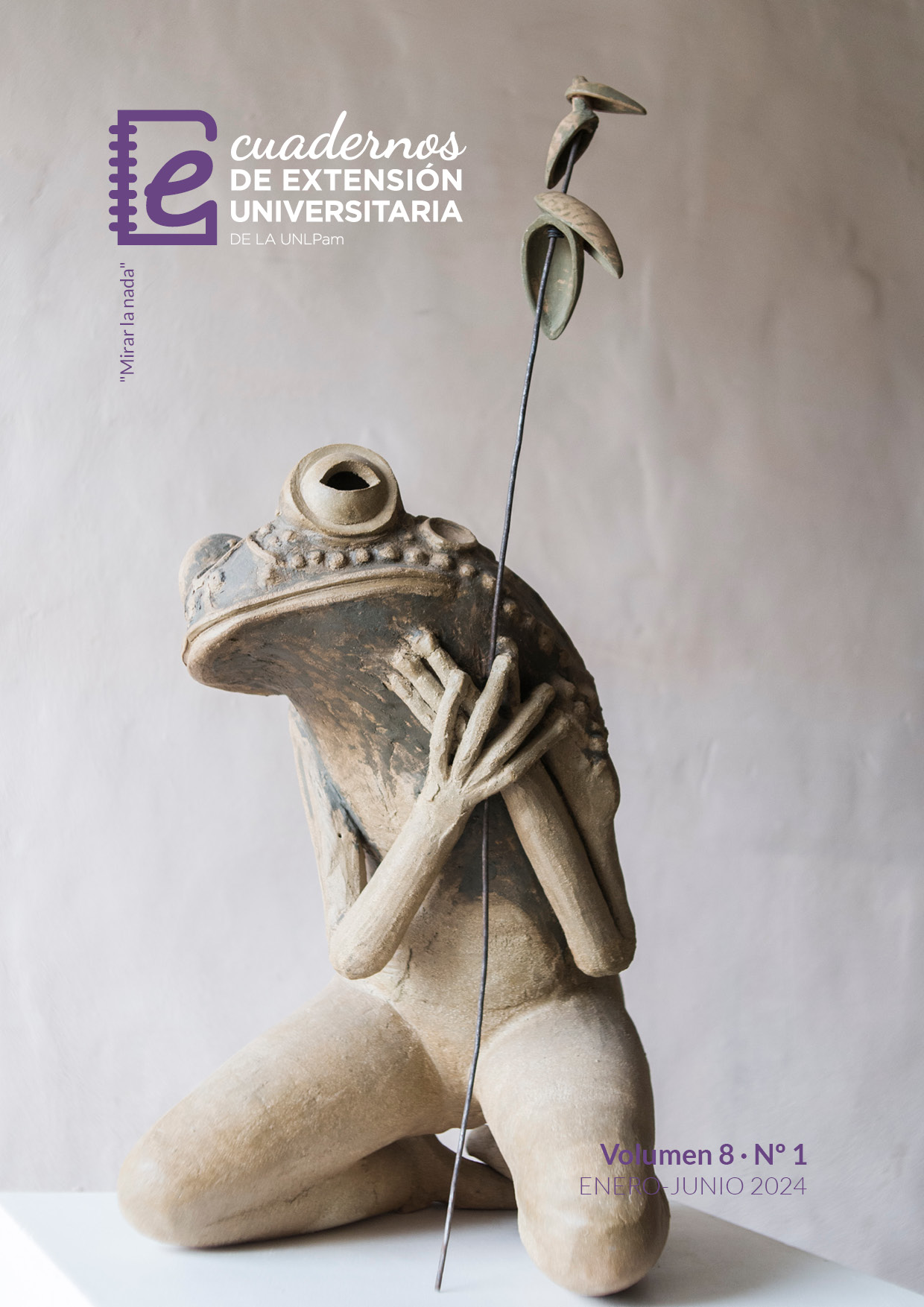Community planters as agroecological tools for food sovereignty
DOI:
https://doi.org/10.19137/cuadex-2024-08-03Keywords:
production agroecologícal, peri-urban, environment, community planterAbstract
Horticultural greenbelts are an important source of local food for cities. Villa María and Villa Nueva are production centers that, in addition to conventional production, have agroecological productions. The construction of a community planter, within an agroecological horticultural establishment, provides a space for articulation and knowledge that contributes to the social fabric. The extension project allowed university students and residents of the town of Villa María to make visible the activities that are carried out in local food productions, understanding the importance and scope of the participatory actions carried out within the framework of the same.
Downloads
References
Altieri, M. A. y Nicholls, C. I. (2020). La Agroecología en tiempos del COVID-19. Centro Latinoamericano de Investigaciones Agroecológicas. CELIA. http://celia.agroeco.org/
Barsky, A. (2020). Las tensiones del abasto alimentario del AMBA frente al COVID-19. En Serie especial COVID 19. La gestión de la crisis en el conurbano Bonaerese, pp. 22-29. http://observatorioconurbano.ungs.edu.ar/wp-content/uploads/FINAL_COVID.pdf
Castoldi, l. R., y Emiliani I. E. (2016). Relevamiento y caracterización del sector hortícola en el cinturón verde de Villa María- Villa Nueva (Informe de Pasantías Académicas). Instituto Académico Pedagógico de Ciencias Básicas y Aplicadas, Universidad Nacional de Villa María, Villa María, Argentina.
De Schutter, O. (2010). Informe sobre el derecho a la alimentación. Consejo de Derechos Humanos. 16º período de sesiones. Tema 3 de la agenda. Promoción y protección de todos los derechos humanos, civiles, políticos, económicos, sociales y culturales, incluido el derecho al desarrollo.
Guzmán, L. A., Mizdraje, D., Castoldi, L. y Becker, A. (2020). Conceptualización del periurbano villamariense y las actividades agrícolas presentes. Proyección. Estudios geográficos yde ordenamiento territorial, 14(27), 80-100. https://revistas.uncu.edu.ar/ojs3/index.php/proyeccion/article/view/3191
Mitidieri, M. S., Sangiacomo, M. A. y Zembo, J.C. (2012). Desarrollo de tecnologías y procesos de gestión para la producción urbana y periurbana de hortalizas. INTA. Estación experimental San Pedro. http://inta.gob.ar/proyectos/PNHFA-063001
Downloads
Published
Issue
Section
License
Comité Editorial de la Revista Cuadernos de Extensión Universitaria de la UNLPam:
Por la presente, declaro que soy autor/a del artículo titulado (nombre del artículo), de carácter original e inédito. En caso de que este artículo fuera aceptado para su publicación en Cuadernos de Extensión Universitaria de la UNLPam, autorizo a la revista a publicarlo en forma digital y a difundirlo en sus redes sociales.
Asimismo, adhiero a la licencia Creative Commons denominada “Atribución - No Comercial CC BY-NC-SA”, mediante la cual se permite copiar, reproducir, distribuir, comunicar públicamente la obra y generar obras derivadas, siempre y cuando se cite y reconozca al autor original.







1.png)













262.png)

.jpg)



